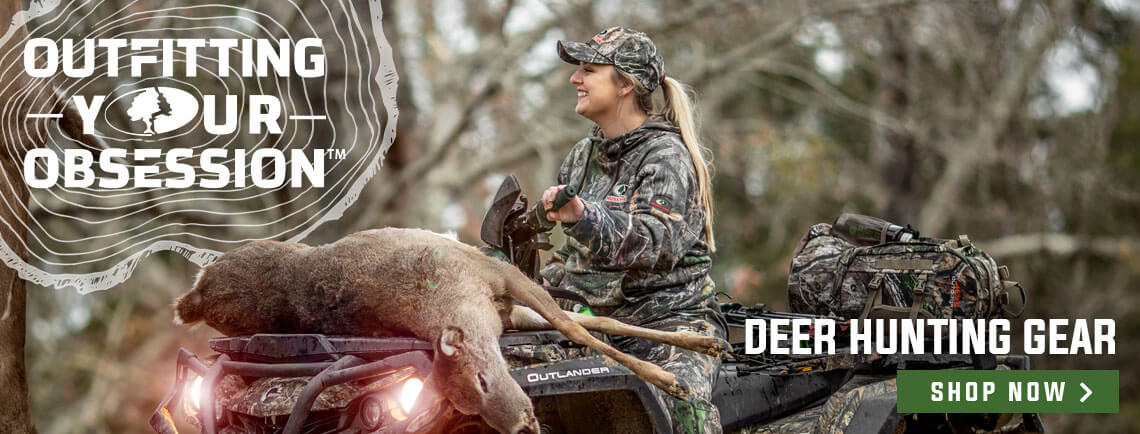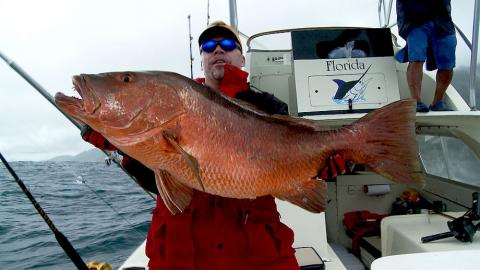Todd Amenrud
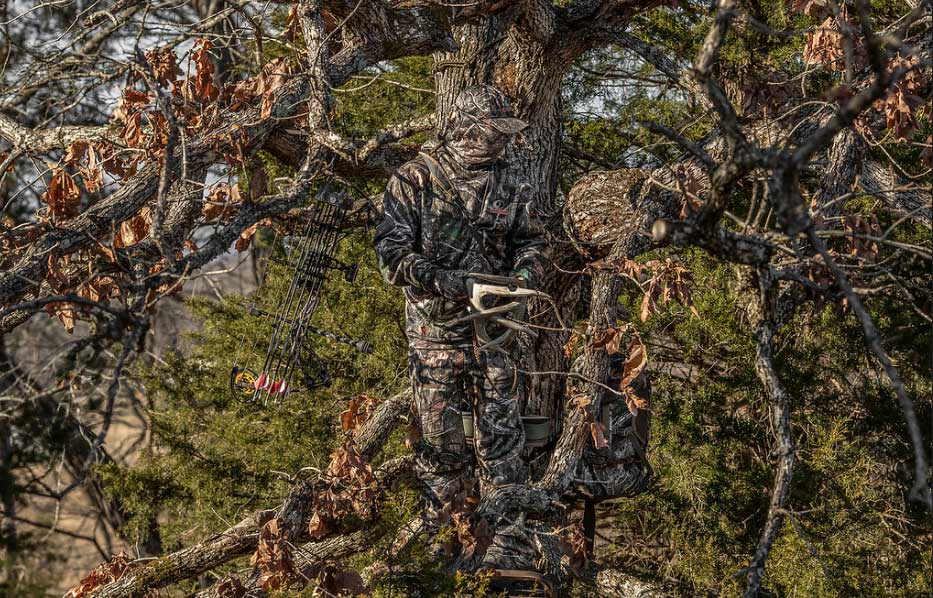
Whether you pursue whitetails with a gun or a bow, hunting from a treestand yields the highest success rate of any technique by a large margin. Regardless of the time of the season and no matter where you roam, an ambush aloft affords you advantages you wouldn’t normally have on the ground. Even if there aren’t any trees, tripods or quadpods can get you up off of the ground so your scent isn’t concentrated at a deer’s “nose level.” In an elevated position, you can see further and your movement is concealed somewhat because you’re out of their normal line of sight.
Let’s be clear; you can’t just nail a bunch of neon-yellow two-by-fours in the crotch of a tree and expect great results. Ambush location selection, site preparation, quality equipment and choosing an appropriate time to hunt the site all have a huge sway over how victorious you will be. Following are a few “rules to live by” when it comes to hunting from a tree stand or elevated platform.
Choosing a Proper Stand Site
Much of choosing the proper stand site has to do with structure. In the same way that an angler finds the “spot on the spot,” the lay of the land and topography differences that confine or guide movement are keys to stand placement. In fact, I submit that structure is much more significant to whitetails than fish. As with most animals, whitetails travel from place to place using cover and terrain to their advantage. Learning to recognize the transition areas, access points, and travel corridors is a crucial to choosing “the spot.”
One of the first orders when approaching a new area is to obtain an aerial photo, satellite image or topographical map. The first spots to focus on are the funnels. I don’t care if you’re hunting big timber, agricultural land or rural lots, there are funnels in your hunting area. With agricultural land and more populated areas, funnels are easily located because of the sections and man-made dividers, but there are bottlenecks everywhere. Wherever you can limit their movement to a smaller zone there will be more traffic, and if you can confine their movement to a smaller area it’s easier to position yourself to beat their astonishing sense of smell.
It’s actually best if you can use both a satellite image and a topo-map. An aerial photo or satellite image won’t show you the terrain breaks, so it’s difficult to tell whether it’s flat ground or a steep incline. Whitetails always want to take the path of least resistance or the safest from predators.
When looking over an area I like to imagine it without any trees, brush or blow-downs. Look for the points, topography breaks, steeper angles, edges or turns that will force or encourage the animal to go one way over another. If you try and foretell their travel patterns this way first, when you add the physical obstructions back to the picture, it can sometimes seem obvious where they will pass through.
Favorable Conditions
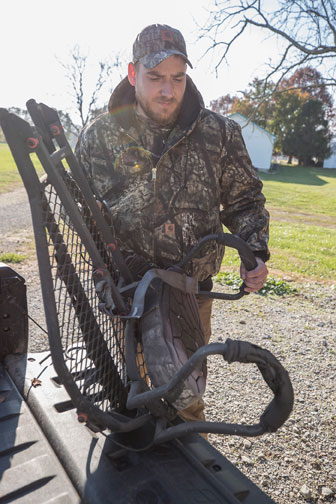 “I have the day off of work! I’m heading to the treestand!”
“I have the day off of work! I’m heading to the treestand!”
So many hunters never even consider the wind direction, whether the thermal is in their favor, if they can approach their site without being detected, and a dozen other details that will ultimately factor into their success. They hunt because they have the opportunity to hunt. The problem being, their target buck (or other deer for that matter) will often pattern them before they ever see the animal. It’s best to only hunt when the conditions are in your favor, or at least wait until the majority of the details back your success. Hardly ever will “all stars align in your favor,” but you must at least make sure the air current (wind and thermal) is supporting your ambush location and approach.
I know how you feel; we only get so many days to hunt each season so we want to make the most of each opportunity. However, by making mistakes and hunting when the list of details favors the animals, we teach our quarry how to avoid us. If the conditions aren’t right, use that time to practice shooting, set up another ambush, scout a new location, deal with camera traps, prepare other equipment, glass a food plot or ag field, search for new properties to hunt or many other tasks that are also part of the hunt. This way prime ambush locations aren’t wasted just because, and the likelihood of harvesting the buck you’re after still exists.
Make sure you plan to hunt the site when there is the best chance for the buck to also be there. Many hunters lick their finger, stick it in the air, and set up downwind of an area with great sign. You must question, however, will the buck you’re after ever want to spend time there with the wind blowing that particular direction? All the sign you’ve set up on may have been made under totally different conditions. This is why I like to map wind directions and correlate them with my trail camera photos. Keep records! There is a certain set of circumstances when whitetails will feel most comfortable spending time in a given area. That’s when I also want to be there.
Get to the Treestand Undetected
Oftentimes your scheme is blown before you ever reach your stand site. Getting there undetected is just as important as hunting during the right conditions. There are numerous deceptions we can use to help us make it to our stands undetected from preparing silent approach trails or planting screening cover like Blind Spot to mixing up our access routes or having a buddy drive you to and pick you up from the site, we just don’t want the animals to know they’re being hunted.
Place Your Treestand High
As you know, every setting is different, but in most situations I like to place my stand as high as I can go in a tree without limiting my shot opportunities. If you're uncomfortable with heights, go as high as you dare. Getting up the tree higher usually lets you see further, makes it harder for the deer to see you, and most importantly, your scent isn't concentrated at their nose level. If I had to pick a height, I would have to say that most of my stands are around 20 feet high.
SHOP MUDDY TREESTANDS AT WALMART
Pick the Right Tree
Take advantage of available cover and break up your silhouette. Using the available cover somewhat relates to treestand height. In bald trees, I'm more likely to go higher than I do in trees with good cover. Look for trees that lose their foliage late like red oaks, clusters of trees, or trees with a “Y” in the trunk to aid in concealment. A less than perfect tree stand tree with minimal cover in a good spot is better than the perfect tree stand tree in a mediocre spot.
Consider the Sun
Determine where the sun will be when you want to hunt the site. Do you like to look into the sun? Neither does a deer. In fact, we have a UV filter over our eyes, a whitetail does not. This makes it even more difficult for them to see while looking towards the sun. In my opinion, wind direction and cover are more important but if you have a choice, position yourself "up-sun" from where you think the deer will be.
Climb Quietly
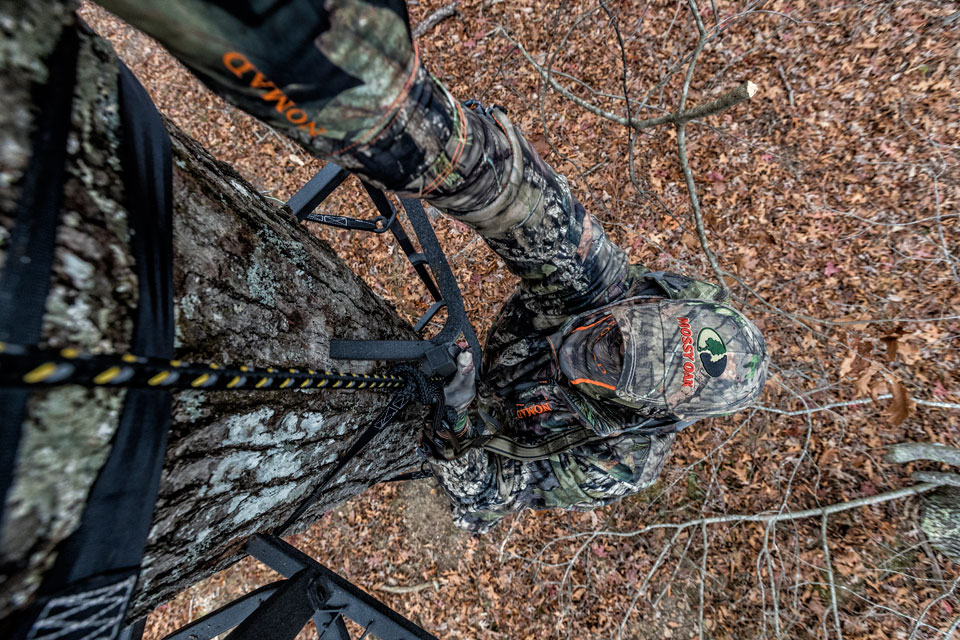
Pick a tree that will be easy to climb or make it simple to climb the tree you’ve chosen. If you have a great spot but you alert every deer within 400 yards by making a commotion while climbing to your platform, your great spot will go for naught.
Because of the regions I hunt and the type of timber, it’s difficult to find a perfectly straight tree with no limbs on it. This is one reason I don't use a lot of climbing stands. I prefer climbing sticks or tree steps and a portable stand. I can make this combo work in most situations. Use enough tree steps or climbing sticks so you can scale the tree easily, safely and quietly.
The older I get the more I have warmed up to ladder stands. They are very popular for older hunters and are a great choice for parents wanting to introduce kids to the sport because of the two-person models on the market. They are more difficult to transport but are reasonable to set up and very simple to scale. With a little extra effort, it can be disguised to blend in to the surroundings.
What about climbers? Just because I don’t use them doesn’t mean they can’t be very effective. In large lots of certain varieties of timber there can be a lot of straight trees with few limbs which is where these models shine. Using a climber means that if the wind switches or some other wrench is thrown into your plan, you can probably remedy the setback by simply choosing another nearby tree.
Practice Your Hunting Scenario
If you're going to hunt from a tree stand, practice from a treestand! The higher you get the more drastic your shot angles decrease. The only way to know for sure is to practice from a tree stand.
If you’re hunting from a ground blind, do you practice while kneeling or sitting? I call it “perfect practice.” I want to practice the most realistic conditions possible. If it’s early season, will you hunt with a mosquito net and if so, can you shoot with it on? During late season, practice with the same type of winter clothing you’ll be wearing while actually hunting. Don’t you want to know how you and your equipment will perform under similar conditions BEFORE you’re at full draw on a monster buck?
Remember the Details
So you have chosen a good spot, you have a stand in the perfect tree, but if a deer walks by can you make the shot? Take the time to trim some shooting lanes or windows where you can sneak an arrow through. Often you can do everything right and have a buck pass within easy range but you can’t get a clear shot. An extendable pole-pruner is the best tool for clearing arrow deflecting brush.
On the other hand, a mature buck may notice a lot of cutting and things that are out of place or disturbed. I believe they will react more negatively to foreign scent at the site than something simply out of place, but I’m always conscious of either.
Wear clean rubber boots and gloves when trimming lanes to reduce scent-transfer. I also suggest treating your clothing with Scent Killer Gold. Many hunters put off using this extremely effective scent-elimination spray until just before the actual hunt. However, if you deposited human scent at the site when setting up or trimming branches and the buck you’re after shows up before you hunt, I promise you won’t see that deer from that tree for quite some time unless it’s a fluke. Every time you touch something (a tree, branch, weed, anything) it’s like you’re “pushing” your scent into that object, and it’s especially obvious to a sense of smell we can only imagine.
Visualize the Shot
I can’t tell you how many titanic buck encounters I’ve had…in my mind. I believe visualizing big bucks approaching your site in your mind’s eye helps you to react much more fastidiously when the real thing happens. No matter where I’m hunting, from the ground or from a tree stand, I like to envision big bucks approaching my site. I find that when a record book buck is closing the distance, it helps me to react more clearly. When my leg is shaking and my heart is about to explode out of my chest from excitement, it makes it much easier to get the job done and “put the puck in the net.”
This positive mental attitude extends further. Visualizing what might be helps on slow days. When I was young (and stupid) I would get impatient and disappointed if I wasn’t seeing a lot of deer. My uncle taught me the lesson, “it only takes one.” Seeing loads of does, fawns and young bucks really doesn’t matter if I’m not hunting for them. It’s that one buck I’m after that matters. The positive mental picture helps you to keep alert and want to put in the time.
Remember, there’s nothing wrong with a ground blind. When in pursuit of whitetails, however, you’ll need to set the blind well in advance of the hunt or you’ll need to “brush it in” and camouflage it to blend-in with the surroundings. A turkey will walk right up to a newly placed blind in the middle of an open field, but a whitetail is much more leery. Blinds have some advantages that tree stands don’t; there aren’t any severe shooting angles, your scent stays somewhat confined in the blind, and you can use one pretty much anywhere.
In closing, I hope it’s not necessary for me to mention treestand safety and using a safety harness! It’s sad that every article or video done about hunting from a tree stand has to have some sort of mention or disclaimer about it. In my view, that’s wasted space because we should all be smarter than that! It should be obvious.
Do I really use one? Always! Has it saved me? Maybe, maybe not, but it has enabled me to make some shots that I wouldn't have made without it. While wearing a safety harness, I feel comfortable enough to lean out away from the platform. This gives me a much wider window enabling me to shoot around brush or other obstacles.
More whitetails are harvested while using tree stands than by any other method. If you choose a stand that you feel safe in and use these basic tree stand rules, you'll be on your way to harvesting more deer, bigger bucks and maybe that trophy of a lifetime.

